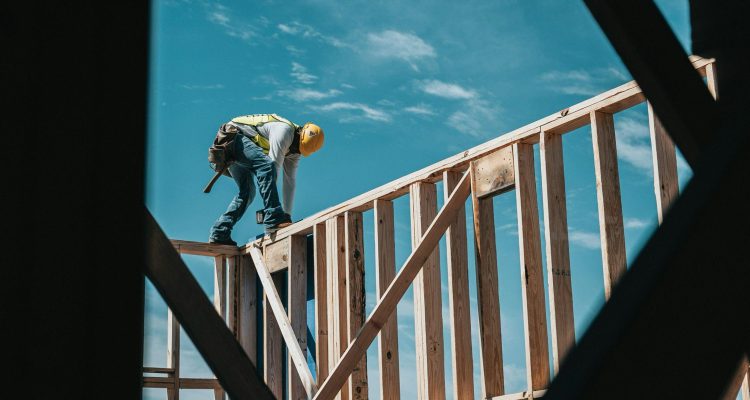
Photo by Josh Olalde on Unsplash
Accidents are an everyday affair at construction sites. In the U.S., though, the past few years have rung the bell hard with a surge in falls, crashes, and deaths. No matter what kind of work you do, being at a construction site is inherently risky. And despite advanced equipment and safety protocols, peace of mind is a far cry. Recent industry stats paint a rather grim picture.
- The U.S. construction industry accounts for the second most workplace deaths, right after truck drivers.
- One out of five deaths of U.S. workers happens within the construction industry.
- The “Fatal Four” (falls, struck by an object, electrocutions, and caught in or caught between) accounts for over 65% of construction-related mishaps.
Take the city of New York, for instance, which shows a concerning uptick in construction site mishaps. Data from last year shows more than 600 injuries and seven deaths, a 25% increase from 2022.
The common underlying reasons were equipment malfunctioning, falls from heights, and unsafe work environments. But that’s not the point! Beyond everything, workers are often left uncompensated for severe injuries, leading to conflict with the contractors and companies hiring.
Here’s an insider look into the troubled state of America’s construction industry — from lack of awareness to legal ramifications and everything in between. Keep scrolling!
Acute Labour Shortage – A Driving Factor for Construction Site Accidents
The U.S. construction industry is reeling from a chain effect. Rapid urbanization, which has led to housing needs, now requires more labor to get things done faster. Hazardous working conditions have always been a challenge, but there’s no denying the labor shortage that the industry faces now.
According to Lightcast’s The Rising Storm Report, the U.S. is currently facing its biggest labor shortage. The country may witness a six-million worker deficit by 2032.
The new workers replacing the retired ones are either less experienced or do not fully understand the risks of working in the construction industry. While employers and contractors are being blamed, they can’t help but hire unskilled construction workers to meet the deadlines for ongoing contracts.
The Human Impact and Legal Ramifications
Behind every compelling industry statistic is a person— a construction worker who’s either injured or, in a worst-case scenario, has lost his life. However, the impact stretches across families and communities.
Earlier this year, a construction worker in Houston, Texas, encountered a slipping accident with a nail stuck right above his ankle. The affected area was swollen and was temporarily treated with hydrogen peroxide. The contractor promised him medical attention the next day.
Still, having developed a fever overnight, he checked into the emergency room. The attending doctors said waiting a little longer could have led to an amputation of the leg.
He reportedly spent more than a couple of weeks at the hospital. The sad part of the story is that neither the incident was reported to the concerned authorities nor did he receive any compensation.
Many similar construction site accidents often go unreported. Serious injuries can leave workers in chronic pain and long-term disabilities. Without adequate compensation, loss of livelihood and mounting medical expenses take a heavy toll on families.
In such cases, the best recourse is to consult a personal injury lawyer with experience in work accident lawsuits. That way, one can have a fighting chance to report an employer’s negligence and bring the facts to light.
According to TorHoerman Law, filing a personal injury case against an employer can be intimidating. However, people are often unaware that workers’ compensation is legally mandated to act as a form of insurance during unforeseen events. If one has the necessary evidence, like medical records or witnesses, they are already one step ahead.
Why Construction Employers Should Be More Than Worried
It’s always unpleasant to witness an injured employee moving the court against an employer. If there are multiple compensation claims, it can lead to hefty premiums.
Also, the claims made by the victim against a contractor or the company may trigger the indemnification clause mentioned in the contract. When there is more than one instance, it can tarnish the reputation of a company.
Today, with the rising number of construction site incidents, there’s been a strong urge for stringent rules. The New York Labor Law Section 240 (Scaffold Law) is a good example of a situation where work benefits are given priority in case of a mishap.
But this particular section is a tricky one. It can be manipulated to recover more than what an injured party deserves. Section 240 demands proving that a worker was injured while working on a “building.” The legal definition of a building is, however, a broad one and often torn between different biases in the courtroom.
However, that doesn’t give an employer or a contractor the liberty to flout rules to complete their pending projects. They should prioritize following workplace safety guidelines, always work with skilled construction crews, and stick to fair and prompt compensation insurance.
The Way Forward for Construction Site Safety for Workers
The surge in construction site accidents across the U.S. is a sobering reminder of the industry’s inherent dangers. While people are expected to follow safety guidelines, there needs to be more shared responsibility.
Workers should also be aware of their legal rights before starting a new construction job. That way, they can always take necessary action when deprived of compensation following an accident. Above all, regulatory authorities like OSHA and the Federal government should step in with broader rules and penalties to mitigate such occurrences.














